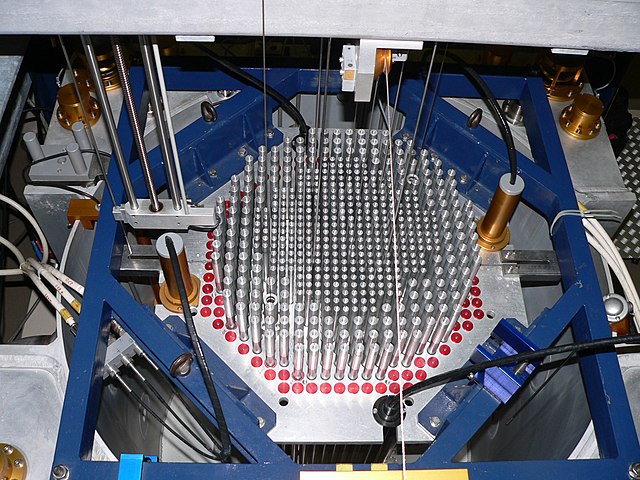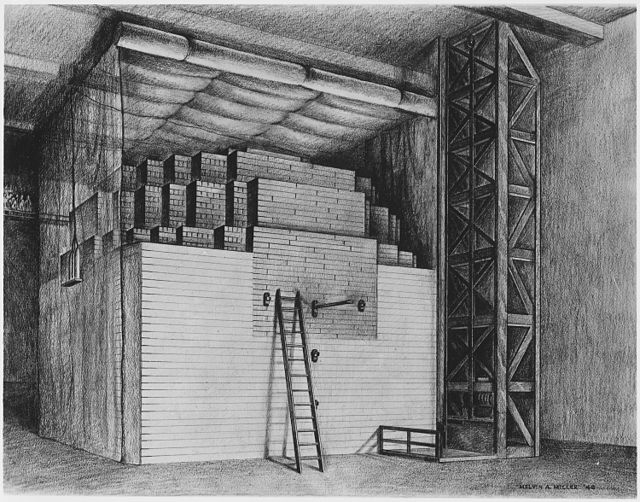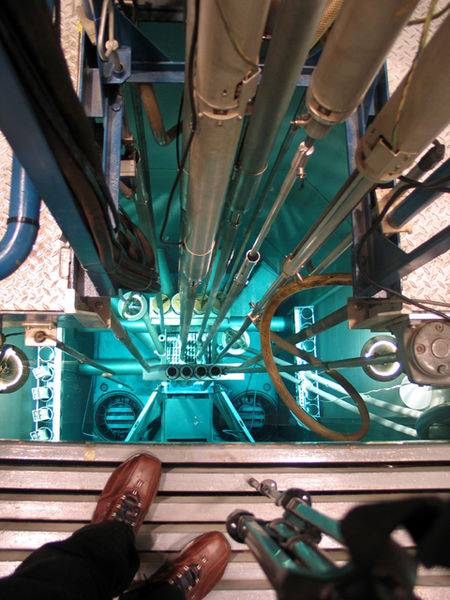A fast-neutron reactor (FNR) or fast-spectrum reactor or simply a fast reactor is a category of nuclear reactor in which the fission chain reaction is sustained by fast neutrons, as opposed to slow thermal neutrons used in thermal-neutron reactors.
Such a fast reactor needs no neutron moderator, but requires fuel that is relatively rich in fissile material when compared to that required for a thermal-neutron reactor. Around 20 land based fast reactors have been built, accumulating over 400 reactor years of operation globally. The largest of this was the Superphénix Sodium cooled fast reactor in France that was designed to deliver 1,242 MWe. Fast reactors have been intensely studied since the 1950s, as they provide certain advantages over the existing fleet of water cooled and water moderated reactors. These are:More neutrons are produced when a fission occurs, resulting from the absorption of a fast neutron, than the comparable process with slow neutrons. Thus, criticality is easier to attain than with slower neutrons.
All fast reactor designs built to this date use liquid metals as coolant, such as the sodium-cooled fast reactor and the lead-cooled fast reactor. As the boiling points of these metals are very high, the pressure in the reactor can be maintained at a low level, which improves safety considerably.
As temperatures in the core can also be substantially higher than in a water cooled design, such reactors have a greater thermodynamic efficiency; a larger percentage of the heat generated is turned into usable electricity.
Atoms heavier than uranium have a much greater chance of fission with a fast neutron, than with a thermal one. This means that the inventory of heavier atoms in the nuclear waste stream, for example curium, is greatly reduced, leading to a substantially lower waste management requirement.

The BN-350 reactor was also used for desalination of sea water.
A nuclear reactor is a device used to initiate and control a fission nuclear chain reaction or nuclear fusion reactions. Nuclear reactors are used at nuclear power plants for electricity generation and in nuclear marine propulsion. Heat from nuclear fission is passed to a working fluid, which in turn runs through steam turbines. These either drive a ship's propellers or turn electrical generators' shafts. Nuclear generated steam in principle can be used for industrial process heat or for district heating. Some reactors are used to produce isotopes for medical and industrial use, or for production of weapons-grade plutonium. As of 2022, the International Atomic Energy Agency reports there are 422 nuclear power reactors and 223 nuclear research reactors in operation around the world.
Core of CROCUS, a small nuclear reactor used for research at the EPFL in Switzerland
The Chicago Pile, the first artificial nuclear reactor, built in secrecy at the University of Chicago in 1942 during World War II as part of the US's Manhattan project
Lise Meitner and Otto Hahn in their laboratory
NC State's PULSTAR Reactor is a 1 MW pool-type research reactor with 4% enriched, pin-type fuel consisting of UO2 pellets in zircaloy cladding.





